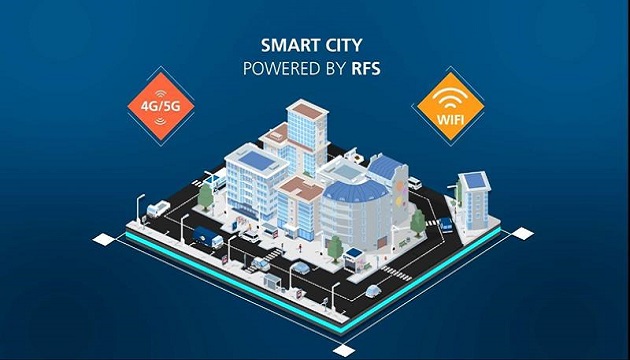Radio Frequency Systems (RFS), a specialist in the design and manufacturer of solutions for wireless and broadcast infrastructure, has unveiled a new Active Passive Antenna (APA) system.
The system looks to help operators overcome the technical and economic challenges associated with the evolution to 5G, and continued network modernisation in relation to LTE-Advanced. The APA system will be demoed for the first time at next week’s Mobile World Congress 2018.
The APA system interleaves a 5G active antenna with a passive base station antenna under the same radome and has been developed in response to demand from operators looking to combine the antennas for 3.5GHz mMIMO with existing passive systems, addressing some of the challenges operators face in relation to cell site restraints when looking to deploy new active antennas in dense urban areas.
RFS’ interleaved APA system is intended to help simplify the evolution to 5G, allowing operators to deploy active antennas more easily and, as a consequence, introduce support for new spectrum bands to existing macro sites without needing to increase the overall antenna count per sector (and minimising visual impact).
The systems is also expected to lower Total Cost of Ownership due to shared chassis and RF components between the two antenna systems and reduced wind load.
It also to more efficiently tackle the heat dissipation issue associated with active antenna technology.
RFS’ APA system takes advantage of the design and housing of the existing passive antenna to act as the heat exchange for the active antenna, driving efficiency, increasing reliability and reducing overall weight by downsizing the bulky heatsinks typically needed.
“Operators will have many different options for deploying 5G active antennas, but for dense urban locations where space is a considerable issue, APA technology is a very efficient approach,” said Herbert Merz, CEO at RFS. “Investment into infrastructure is going to grow considerably with 5G and so will deployment complexity. This new approach will help to streamline that evolution.”
The APA is effectively a two-in-one system. By interleaving the two antennas it’s been possible to minimise distortion while ensuring the consistently high performance of both systems. For operators, APA technology should enable them to prepare for 5G while also improving their 4G and LTE-A networks to support the ever-increasing demand for capacity.

